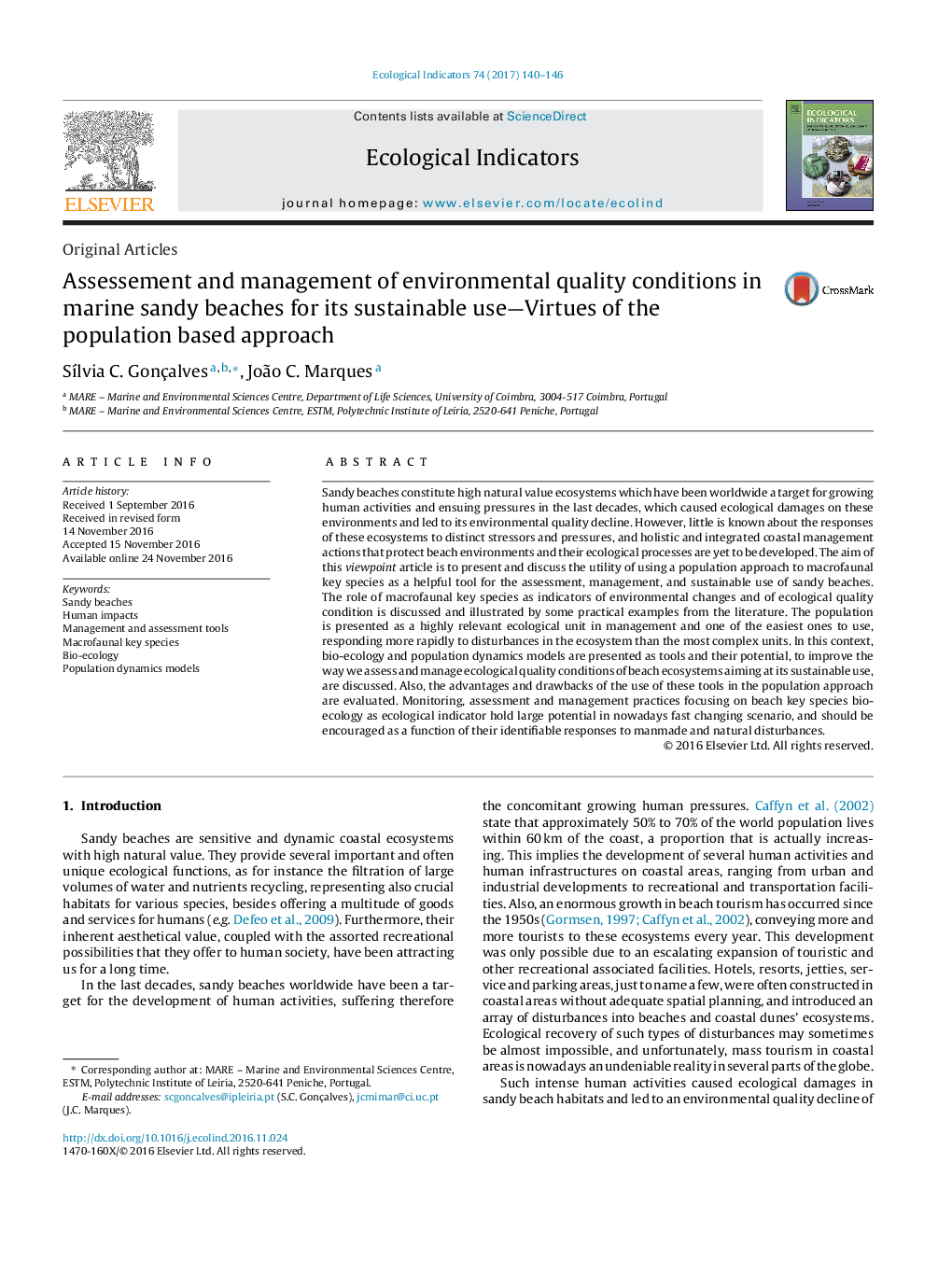| کد مقاله | کد نشریه | سال انتشار | مقاله انگلیسی | نسخه تمام متن |
|---|---|---|---|---|
| 5741841 | 1617128 | 2017 | 7 صفحه PDF | دانلود رایگان |
- Human activities introduced detrimental impacts on sandy beaches.
- Macrofaunal key species function as indicators of environmental changes in beaches.
- A population approach to key species is a relevant tool in assessment and management.
- Bio-ecology and population dynamics models are major tools and hold large potential.
Sandy beaches constitute high natural value ecosystems which have been worldwide a target for growing human activities and ensuing pressures in the last decades, which caused ecological damages on these environments and led to its environmental quality decline. However, little is known about the responses of these ecosystems to distinct stressors and pressures, and holistic and integrated coastal management actions that protect beach environments and their ecological processes are yet to be developed. The aim of this viewpoint article is to present and discuss the utility of using a population approach to macrofaunal key species as a helpful tool for the assessment, management, and sustainable use of sandy beaches. The role of macrofaunal key species as indicators of environmental changes and of ecological quality condition is discussed and illustrated by some practical examples from the literature. The population is presented as a highly relevant ecological unit in management and one of the easiest ones to use, responding more rapidly to disturbances in the ecosystem than the most complex units. In this context, bio-ecology and population dynamics models are presented as tools and their potential, to improve the way we assess and manage ecological quality conditions of beach ecosystems aiming at its sustainable use, are discussed. Also, the advantages and drawbacks of the use of these tools in the population approach are evaluated. Monitoring, assessment and management practices focusing on beach key species bio-ecology as ecological indicator hold large potential in nowadays fast changing scenario, and should be encouraged as a function of their identifiable responses to manmade and natural disturbances.
Journal: Ecological Indicators - Volume 74, March 2017, Pages 140-146
